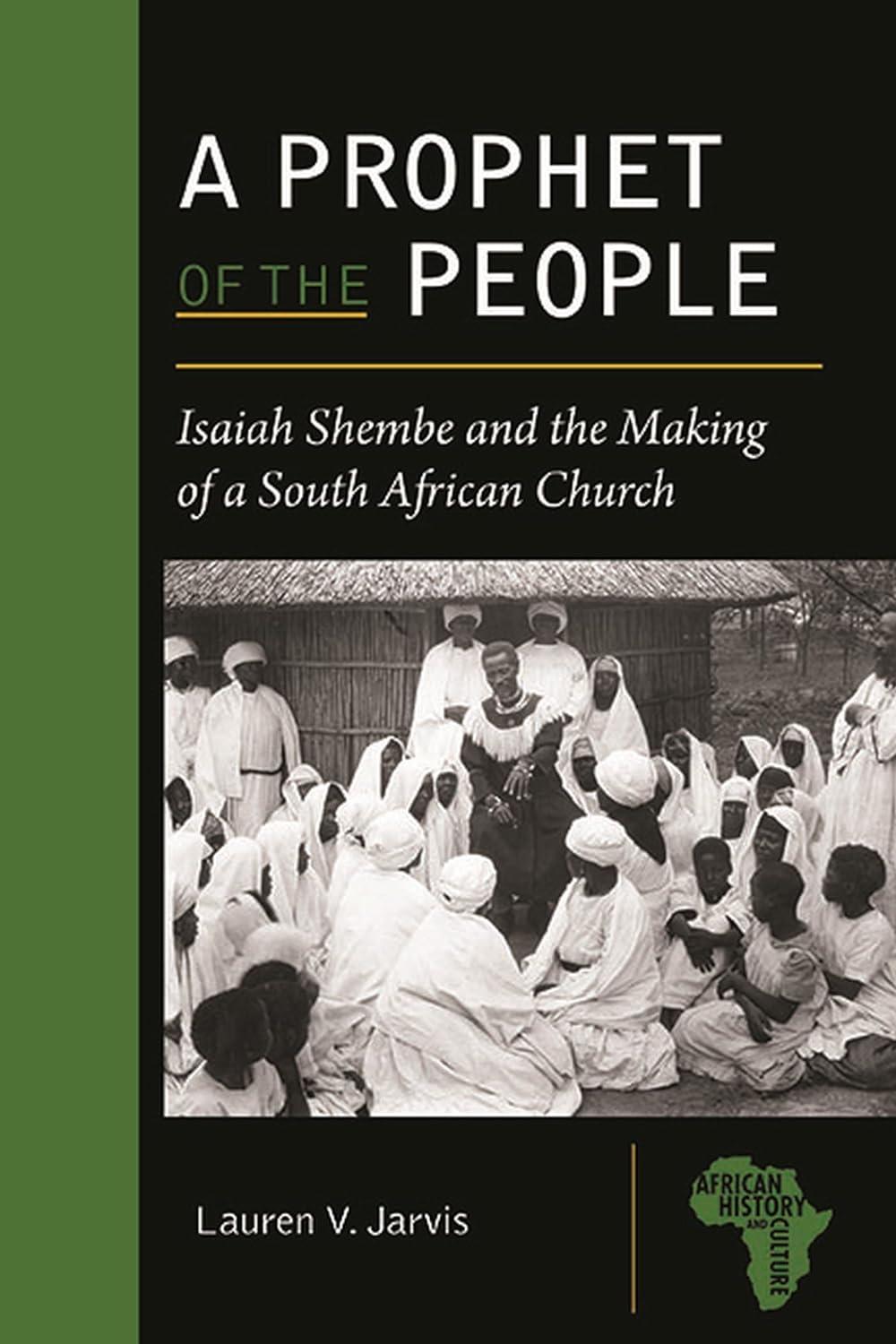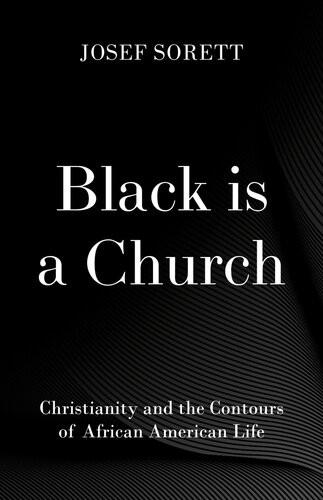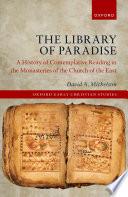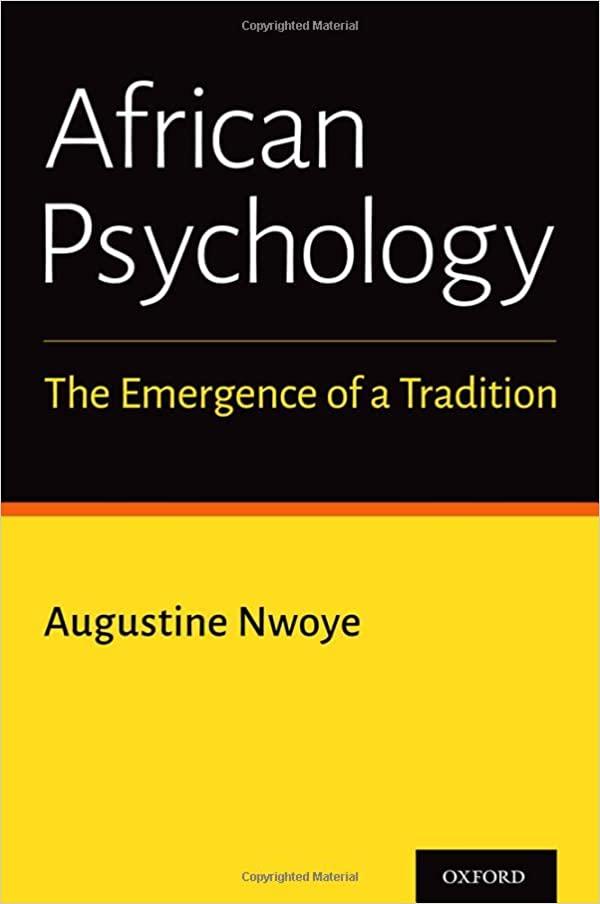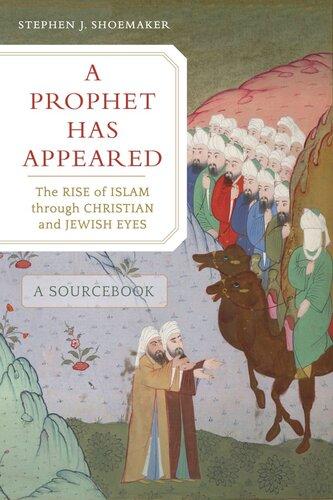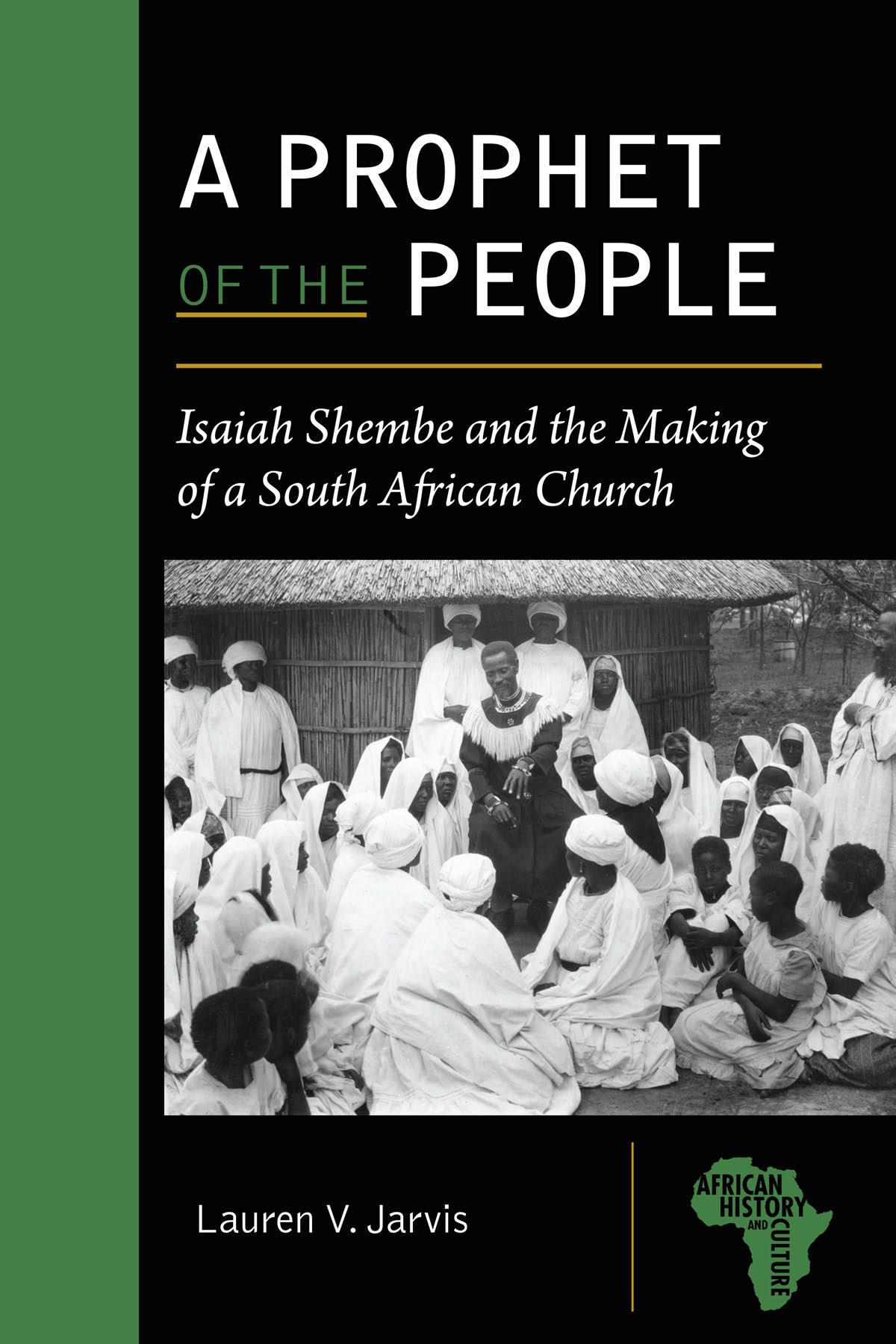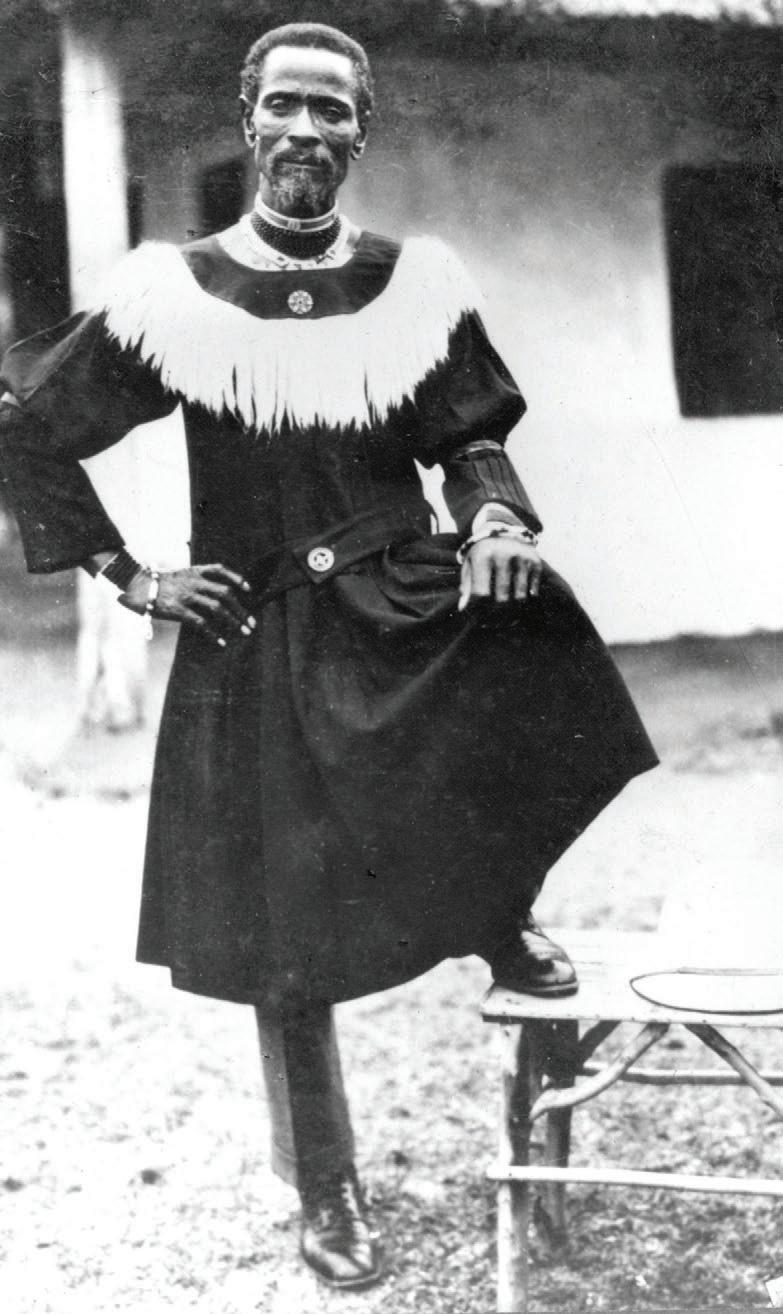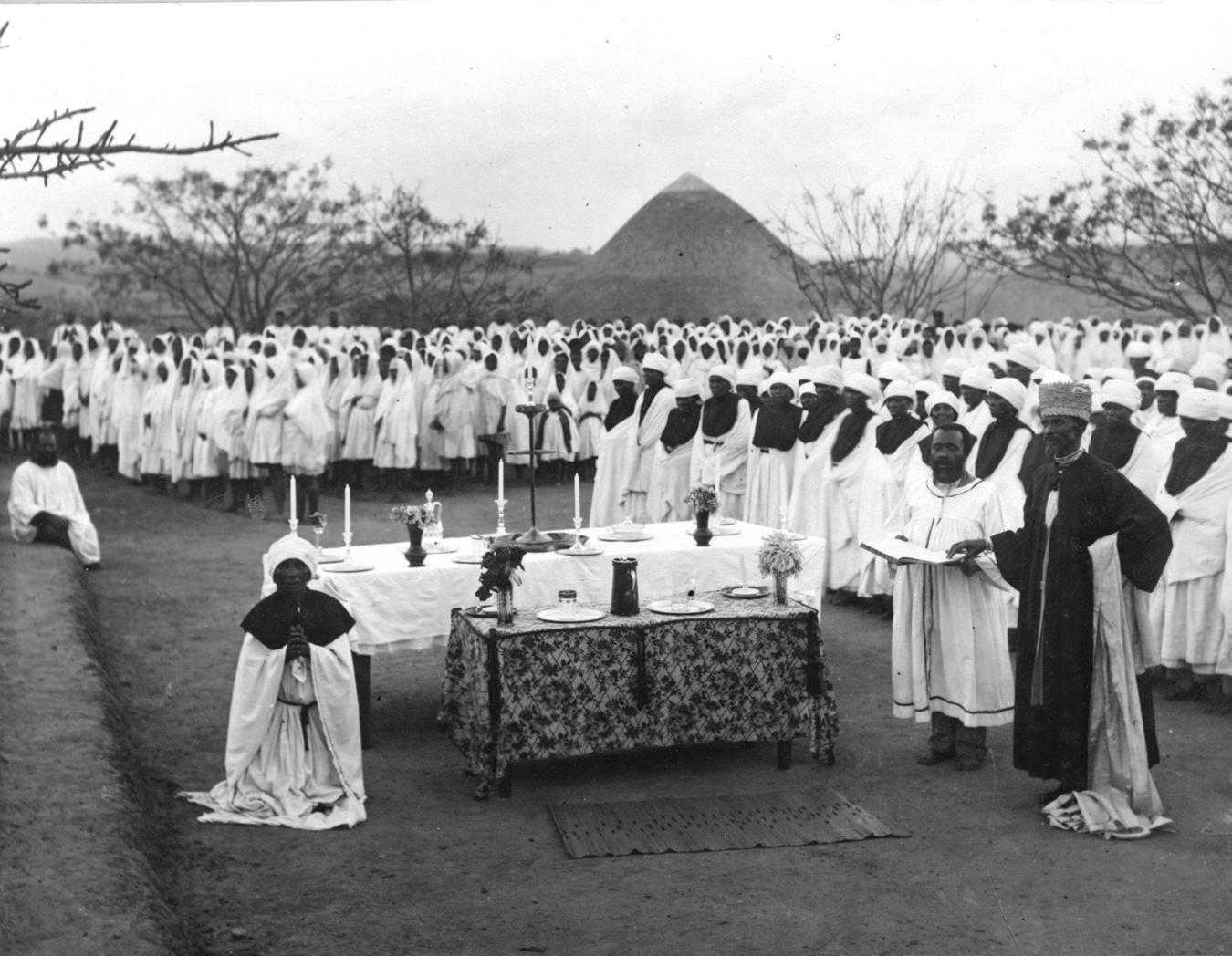Acknowledgments
ACKNOWLEDGMENTS
I love reading acknowledgments. They let me imagine what someone else’s life is like: the details and the influences, the people and places that mattered, and the moments when they did. That desire—to imagine another person’s life—is what made me want to write this book. I learned while writing it that I do not really know how to revise—only how to re-do. Oftentimes, so much re-doing felt like a burden. But now that I am finally finishing, so much re-doing seems like the biggest privilege. So, let me offer a window into my life and all the people who gave me the space, time, and encouragement to finish.
I’m going to start with family. My mom, Dawn V. Jarvis, passed away unexpectedly as I was nearing the end of this project. So much of the good in my life comes from her fierce sense of what was right and her courage to be different. She was the bravest person I have ever met. My mom as well as Kaye de Kruif, Donna Jarvis, Kathryn Jarvis and Greg Propp, Kimberly Jarvis and James Greene, Jarvis and Tyler Greene (and now their families too) showered me with so much love through it all. So did honorary family. I am looking at you, Erica Edelman. Charles and Virginia Jarvis are no longer living, but their influences are everywhere—from the photos I looked at on my desk to the nagging but loving voice I heard, saying “If I were you, I’d just get that book done.” (I’m working on it, Grandma!)
More recent additions to my family made innumerable contributions. Alexander Charles and Dashiell McRae Jarvis-Duncan brought joy, laughter, and much-needed perspective, regularly reminding me that there were more important things than what was wrong with my chapter. Of course, my kids could play such a fulfilling role in my life because I have an equal partner who helped make it so. Al Duncan, there are words. They are all insufficient.
Thank you to the many people who have cared for our kids while we were at work and even, a few times, on vacation. This includes some people already mentioned, especially Dawn Jarvis, Kaye de Kruif, and Donna Jarvis, but also Russ and Sue Duncan, Helena and all of the Pesonens, and the terrific teachers at several day cares and preschools in South Africa and the United States. Alesha Foushee and the women at Childcare Matters in Chapel Hill, North Carolina, have built something so magical. This will sound awkward, but thanks for creating a place where I felt so happy to leave my kids.
I was lucky as an undergraduate to see people who made me want to be a historian—people who cared about students and made it clear why their work mattered. Thanks to Bob Korstad and Karin Shapiro for playing that role then and now. Thanks to Karin, too, for reading so many drafts and talking through so many ideas at Namu in Durham and then over Zoom when the pandemic would not allow Namu anymore.
In graduate school, I was around a cohort of brilliant women in African history, some who stayed in academia and some who moved on. I think of them often. Katie McDonough, thanks for being such a dear friend and for hanging out with me on three continents during the process of finishing this book. Jim Campbell, Sean Hanretta, and Richard Roberts provided many free meals and much goodwill. I am grateful to have been around such gracious people as I tried to figure out what it meant to be a historian.
In South Africa, I owe so much to archivists, other scholars, and countless kind people. My thanks above all to the Nazaretha who welcomed me into their worship services and homes and took the time to tell me their stories. I know that my interpretations of Shembe’s life are quite different from theirs, but I also know that their ability to tell his story will always be more compelling and powerful than mine. The inimitable, brilliant Mwelela Cele provided some of the translations that transformed this project, including a key set of articles in iLanga lase Natal. Audrey Mbeje is the most talented language professor I have ever met. I was lucky
Acknowledgments
to be her student. A song she taught us in class gave me a last-minute insight about what it meant for a young Nazaretha woman to be called umakoti before marriage.
Constance Dlamini Mkhize, thanks for riding around with me to various far-flung destinations (sometimes in the middle of the night), nudging me when I wanted to slink off without knocking on more doors, and providing such wonderful company through it all. The reality of inequality in South Africa means that someone recommended as a house cleaner is, in fact, the most phenomenal ethnographer and interviewer you have ever met. Here’s to a future in which more South Africans have opportunities to use their many talents.
A remarkable group of people who study KwaZulu-Natal have been the most patient of listeners and the dearest of friends: Brady G’sell, Meghan Healy-Clancy, Jill Kelly, Liz Timbs, and T. J. Tallie. Thank you for greeting every one of my eureka emails with enthusiasm and for helping me keep my head in the game.
I have the best colleagues, who have encouraged me, laughed with me, and reminded me what is possible in an academic career. From Utah, Beth Clement is the only person who has ever made me nostalgic for faculty meetings—or at least for faculty meetings in her company. At the University of North Carolina, I’m so grateful to Lisa Lindsay and Emily Burrill (before the University of Virginia whisked her away) for being kind role models and good friends in my field. The same applies to Susan Pennybacker in an adjacent field too. Louise McReynolds, Ron Williams, Sharon James, and Corry Arnold have offered so much good advice and commiseration over burgers and generously shared beverages in my front yard. Katie Turk and Molly Worthen are terrific scholars and kind people. I am lucky to count them as colleagues and friends.
To students at Stanford, San Francisco State, Utah, and UNC, I cannot tell you the many ways you have helped me understand South African and African history better. A few among this remarkable crew deserve mention: Sarah Bowers, Georgia Brunner, Kennedy Gandy, Kimathi Muiruri, and Alex Peeples. The graduate students at UNC have also helped me understand my work better and left me marveling at all that they are doing. Thanks to Nancy Andoh, Laura Cox, Kaela Thuney, and Abbey Warchol.
I feel very lucky that so many of the people who have already studied the Nazaretha were kind and encouraging at the prospect of another book about Shembe. Thanks to Joel Cabrita, Liz Gunner, Carol Muller, and Nkosinathi Sithole. Above all, your rich, compelling interpretations made me want to learn more. I’m grateful to
Acknowledgments
many people, some no longer living, who embarked on ambitious projects to record Nazaretha testimonies, songs, and histories to make them accessible, including, again, Liz Gunner and Carol Muller as well as Irving Hexham, Hans-Jürgen Becken, Bongani Mthethwa, G. C. Oosthuizen, and Robert Papini. Because some of these projects involved teams of people, many unnamed in the final result, thanks to them too.
I appreciated feedback from Daniel Magaziner, Derek Peterson, and Robert Trent Vinson on an earlier version of this project as well as the feedback from the anonymous reviewers at Michigan State University Press. Thanks to Peter Alegi for thinking this could be something and to Caitlin Tyler-Richards, whose influence and good ideas helped get me over the finish line.
Along the way, the Fulbright-Hays program, the Mellon/ACLS program, and the Institute for the Arts and Humanities at UNC helped fund my research and this publication.
I will close with convention: despite the many people who made this book possible, the mistakes are, of course, my own.
Introduction
In 1910, Isaiah Shembe was just over forty years old. He had already been a farm tenant, a family patriarch, a sanitation worker, and a wandering faith healer.1 Most recently, he had become a Baptist evangelist for a fledgling church that sent him to one of South Africa’s most dangerous mission fields for African Christians. The trip required not only a new name and a disguise, but some of his own funding too.2 The cost was one reason why he gave up. His lack of success was another.3 But then in 1910, the very year that South Africa became one place on a map, Shembe’s evangelical fortunes started to change. He began to find more people who would listen to his preaching or try his healing in places where he faced fewer threats of arrest and vigilantism.4 By the mid-1910s, he became the leader of his own church, the Nazaretha or Nazarites, a name that referenced “a vow of separation to the Lord” in the Old Testament.5 Over the next twenty years, that church grew to include tens of thousands of people, with worship sites scattered through South Africa’s eastern coast and reaching north into current-day Eswatini.6 Church membership included people from across many of South Africa’s social fractures—race, ethnicity, and chiefdom as well as gender, generation, and geography—if they came, nevertheless, from among those left behind by South Africa’s industrializing economy. By the 1930s, people knew of Shembe not only as a church leader but also as a wealthy
healer and landowner, as the father-in-law of a Zulu king, and as the father of sons who had attended the best schools open to Africans in segregation-era South Africa. Many knew of him too as someone who had evaded and openly defied state authority with seeming impunity. For his supporters, this added to the scale and scope of his miracles.7
In the last years of his life, Shembe’s followers spoke as if his stunning success had always been a part of God’s plan. Even before Shembe’s birth, they said his mother had heard a voice that she would have “a son to be praised.”8 But, to return again to 1910, observers then would have seen someone different: a man who could not read or write, a man who had recently been married to three wives, and a man whose first mission had ended with little to show. They might have guessed that Shembe would soon return to sanitation work.
Shembe’s remarkable rise has captivated the attention of many people for nearly a century. As early as 1927, a short article appeared in a South African newspaper, describing Shembe as a “herd boy turned healer.”9 Three years later, the Illustrated London News included a feature about Shembe for readers on another continent, puzzling over him as a “man of no learning but great wisdom” whose story was “romantic and inspiring.”10 In 1936, just one year after Shembe died, the first printed book about him appeared in isiZulu, the main language spoken by Shembe and the majority of the people in his church. Edited by one of Shembe’s neighbors, the politician and educator John Dube, the book’s introduction noted that some people—including Dube himself—“found fault” with Shembe, but that a “person who is followed by so many thousands (as [Shembe] is), who has bought so much land, who has become better off than all the Black people, hawu [wow]! Of such a person the Black people desire to know.”11
Since Shembe’s death in 1935, the continued growth of the Nazaretha Church has helped sustain interest in its founder. Today the church is split between competing congregations, but altogether these rival branches count millions of members.12 Their ranks include celebrity converts; their dramas inspire television shows; and their events are venues for politicians hoping to consolidate support.13 In 2017, shortly before becoming South Africa’s president, Cyril Ramaphosa appeared sitting on the ground and barefoot (to follow the Nazaretha rules of worship) at one of their largest gatherings. At the event, he requested that church members “pray for the ANC [African National Congress],” South Africa’s governing party.14 His request was a double indication of the world Shembe had helped make—not only because the Nazaretha mattered enough for Ramaphosa to visit, but also because
INCLUDED
FIGURE 1. Isaiah Shembe, ca. 1930. PHOTOGRAPH
WITH PERMISSION OF CAMPBELL COLLECTIONS, UKZN.
Christianity had become such a taken-for-granted part of life for South Africans that a Black presidential candidate in 2017 would have no qualms asking for prayers.
The first scholarly account of Shembe’s life appeared in 1936, the same year as Dube’s biography, when a white South African woman submitted her master’s thesis in anthropology at the University of Natal.15 Since then, scholars across disciplines have explored the sources of Shembe’s “genius” and talents, focusing on how he “revitalized society” or “constituted a new hybrid regime of religious truth.”16 Recent major revisions of church history have emphasized the roles of texts—written, spoken, and sung—in bolstering Shembe’s authority and consolidating the Nazaretha community.17 And yet, for all of the attention that the Nazaretha have received, questions remain about why and how Shembe became an emblem of a changing South Africa.
By approaching Shembe differently—by following him through the places he lived, visited, and learned to avoid—one draws new insights not only about Shembe’s success but also about his world. In his nearly seven decades, Shembe transformed into a prophet of the people in many senses of the phrase: as he absorbed ideas from others around him, managed constraints to make new converts and allies, and crafted popular appeal that resonated with his left-behind community. Along the way, Shembe’s actions and decisions expose processes that defined modern South Africa. How, for example, did Christianity saturate public life so rapidly after 1900?18 And how did South Africa give rise to so many broad coalitions—not only churches such as the Nazaretha but also social-movement trade unions and the multiracial, tripartite alliance of a political party still in power today?19 Why did men imagined as saviors—whether sacred, secular, or somewhere in between—often stand at the helm of these coalitions?20 And why, speaking to events in the news in late 2022, might the same president who asked for Nazaretha prayers be embroiled in a scandal over money hidden in his couch?21 Shembe’s life on the move in an industrializing era shows how people laced together the spread of Christianity with strategies of evasion and models of community that continue to shape South Africa today.
The Life of an Individual
Many historians remain skeptical that one life can reveal much of anything about the past. And yet, there is an ongoing turn toward studies of individuals in African
history.22 Most of these accounts sit somewhere outside the field of traditional biography; instead, they use strategies gleaned from critical biography and microhistory to generate meaning by placing one life in broader contexts. As Jacob Dlamini explains in an example of this genre, the story of his subject, a South African freedom-fighter-turned-collaborator, “needs to be painted on a larger canvas.”23
Within this biographical turn, studies of individuals continue to meet many ends. Some affirm the basic principle of social history: that ordinary people have important things to tell us about the past.24 Others, including this one, use individuals who were not considered ordinary during their lifetimes to offer new vantage points for understanding periods of rapid transformation.25 Although Shembe shared characteristics with many people, his exceptional mobility and, with it, his willingness to go places where others would not, make him a compelling, if atypical, subject for understanding a changing South Africa.
Altogether, the many biographical accounts add detail, texture, names, and specifics to the historical record. This may not seem like a significant political intervention to some, but the long-enduring links between the African continent and an imagined absence of individualism still make it one. Shembe lived in a world in which white government officials debated the dangers of attempts to “individualize people who are not fit for individualism.”26 Notions of the primacy of group identity persisted after Shembe died, as evidenced by some of the scholarship that would be written, in fact, about the Nazaretha.27 Studies of individuals can continue to correct for that long history even as few scholars today would write of a singular “African mind,” as some once did.
In this case, too, the life of a particular individual provides a front-row seat from which to observe the emergence of a different kind of leadership.28 Max Weber defined a certain quality, charisma, to begin explaining these processes. In Weber’s formulation, charismatic authority emerged from “powers or properties that are not found in everyone and that are thought to be the gift of God.” 29 Charismatic leaders were heroes and miracle workers—people who did the seemingly impossible and, as a result, inspired intense devotion. Their authority was, in Weber’s understanding, fundamentally disruptive, untethering people from other connections. Weber saw examples of this authority in a range of figures, from American Indian shamans to the early Mormon leader Joseph Smith, all of whom collected people in new configurations of belonging.30
The anthropologist Marshall Sahlins, by contrast, explored not a quality but a category of person: “big men.” Based on his research in Oceania, Sahlins sketched
out a portrait of people who often had remarkable skills, whether as healers, gardeners, or warriors, but who also maneuvered, politicked, and negotiated to create a following bigger than their families alone. “Big men” were distinctive because they were not chiefs who inherited their authority. As a result, the ties of loyalty and obligation created between “big men” and their followers had to be “continually reinforced.” As Sahlins saw it, being a “big man”—or a “fisher of men,” as he also called them—was hard work.31
Notions of “charisma” and “big men” have moved in many directions since their initial articulations. While once the domain of sociologists and psychologists, the idea of charisma is currently attracting greater interest from historians, who are sketching out the contexts that produced different formulations of charisma as well as the qualities that defined it at different places and times.32 “Big men,” in turn, moved from the anthropology of Oceania to the anthropology and history of Africa in the 1960s and 1970s because it dovetailed nicely with foundational concepts in African studies, including foremost “wealth in people,” or the idea that accumulation among African elites came from access to human resources more than private property.33 As political scientists attended to one-party states and authoritarian regimes on the African continent after the 1960s, the idea of “big men” became more narrowly linked to kleptocratic leaders and patronage politics.34 In the meantime, scholars in other fields reframed their approach. 35 Historians of Africa are now more likely to ask questions, in the terms Kathryn de Luna has posed, about how leaders and followers “crafted dependencies”—that is how they “invented clans, royalty, guilds, and healing cults,” for example, through “manipulation of speech and knowledge” as well as “control of material resources.”36 De Luna’s framing points to complexity and relationships—between ordinary people and leaders, between ideas and things—that allow for fuller contextualization of an individual’s experience.
It is easy to draw parallels between Shembe’s life and the different ways that scholars have explained new categories of leadership. Still, Sahlins’s idea of the effort demanded of “big men,” when considered alongside de Luna’s calls for attention to relationships, offers the most helpful framework for understanding Shembe. Put simply, Shembe hustled. His unconventional path to Christianity meant that, from the start, he lacked the knowledge and connections held by many other African Christians and church leaders. As Shembe became an evangelist anyway, South Africa’s complicated rationing of authority produced innumerable hurdles. Shembe had to find places where he would not be caught, whether by state officials or
vigilantes angry about his presence. He had to find people who might be tractable and then grapple with the many ways that those people might want to use him too. As he moved from place to place, moreover, and pulled people together in one community, he had to manage the resultant conflicts and contradictions as well as the many antagonisms that he and his church accumulated. For Shembe, these efforts were often difficult and dangerous—even after his evangelical fortunes began to improve in 1910. More than once, he came close to disaster. But with luck, savvy, and dogged determinism, Shembe and other members of the church found ways to weave such challenges into the fabric of their community.
Defining an Era
The backdrop for Shembe’s life is a mottled map affected by sweeping but uneven change. Shembe’s birth in the late 1860s coincided with the diamond rush that jumpstarted South Africa’s industrial revolution, drawing people into new patterns of work, community, and daily life.37 His death in 1935 occurred amid South Africa’s recovery from the Great Depression and amid a global rise of fascism that would usher in apartheid in the 1940s.38 Within this period, 1910 represented an important pivot as the Act of Union made South Africa one political entity.39 Union had profound consequences in Shembe’s life, too, contributing to the turnaround in his evangelical fortunes. And yet, 1910 also represented a midpoint more than an endpoint. Shembe’s trajectory and this era of South Africa’s history were defined by features cutting across the span from the 1870s to the 1930s.40
First was the dramatic realignment of labor and, with it, the wrenching apart of African communities by gender and generation across urban and rural space. Scholars of South African history have shown how African social structures shaped the growth of industrial capitalism and, as a result, why groups of young African men were the first to leave their rural homes to earn wages through migrant work, leaving elder men, women, and children behind.41 But if the structure of African communities helped mold South Africa’s emergent working class, so did a rash of restrictions, some imposed by the state and some imposed by African families, attempting to keep women and children in rural areas—and to keep wage-earning men coming back to them.42 By the early 1910s, the skewed ratios of African men and women in urban and rural space were peaking in many parts of South Africa. In Durban, for example, a city that Shembe visited as an evangelist, the 1911 census
counted sixteen African men for every one African woman.43 But then, in the early 1920s, African women’s movement into cities and towns began outpacing African men’s as women found ways to bridge the spatial gaps.44 It was not just rapid urbanization in general, but particularly the rapid movement of African women, children, and families into South Africa’s cities in the 1930s that elicited more urgent calls for “separateness” from Afrikaner nationalists.45 This movement raised fears that the bulwark that separated African families across urban and rural space was breaking.
Greater connectivity and mobility also defined this period. The interior position of South Africa’s vast diamond and gold wealth led to the rapid expansion of infrastructure. This first took the form of more wagons and wagon routes, but an age of railway expansion soon followed.46 Again, using the approximate year of Shembe’s birth as a marker, South Africa had less than one hundred miles of railway in the late 1860s. By 1910, the mileage had increased one-hundred fold: 10,000 miles of railway crisscrossed South Africa, connecting portions of it and bypassing others. 47 And by 1910, a new form of transportation was already becoming more accessible too: the automobile. Through the 1910s, the number of automobiles grew slowly, but then, in the fifteen years between 1920 and 1935, that number increased nearly ten times, from around 20,000 automobiles to more than 200,000.48 Those cars drove on an expanded road network of more than 80,000 miles.49 But, as would be a recurrent them in twentieth-century South Africa, intersections of race, class, and gender inflected this era of increased mobility, influencing who could travel where and how.
Greater connectivity meant that some people could move more easily across South Africa’s many lingering political and social fractures. These persistent fractures—despite the state’s efforts to consolidate and unify—represent a final hallmark of this era. Economic transformations beginning in the 1870s prompted every government in the regions that would become South Africa to adopt new laws and legal codes to manage the movement of laborers, the conquest of more groups of people, and shifting possibilities for profit. As a conglomeration of formerly independent African polities, protectorates, Boer Republics, and British colonies became one place in 1910, the Union government had to grapple with the recent explosion of laws in each region. The Union government also, like many around the world after 1910, attempted to shape its citizens and subjects in more ways.50 In South Africa, race refracted these efforts, multiplying the need for policies, but so did a host of other social and spatial divisions, marking different categories of people (e.g., “exempted” Africans) and land (e.g., former mission reserves). As a
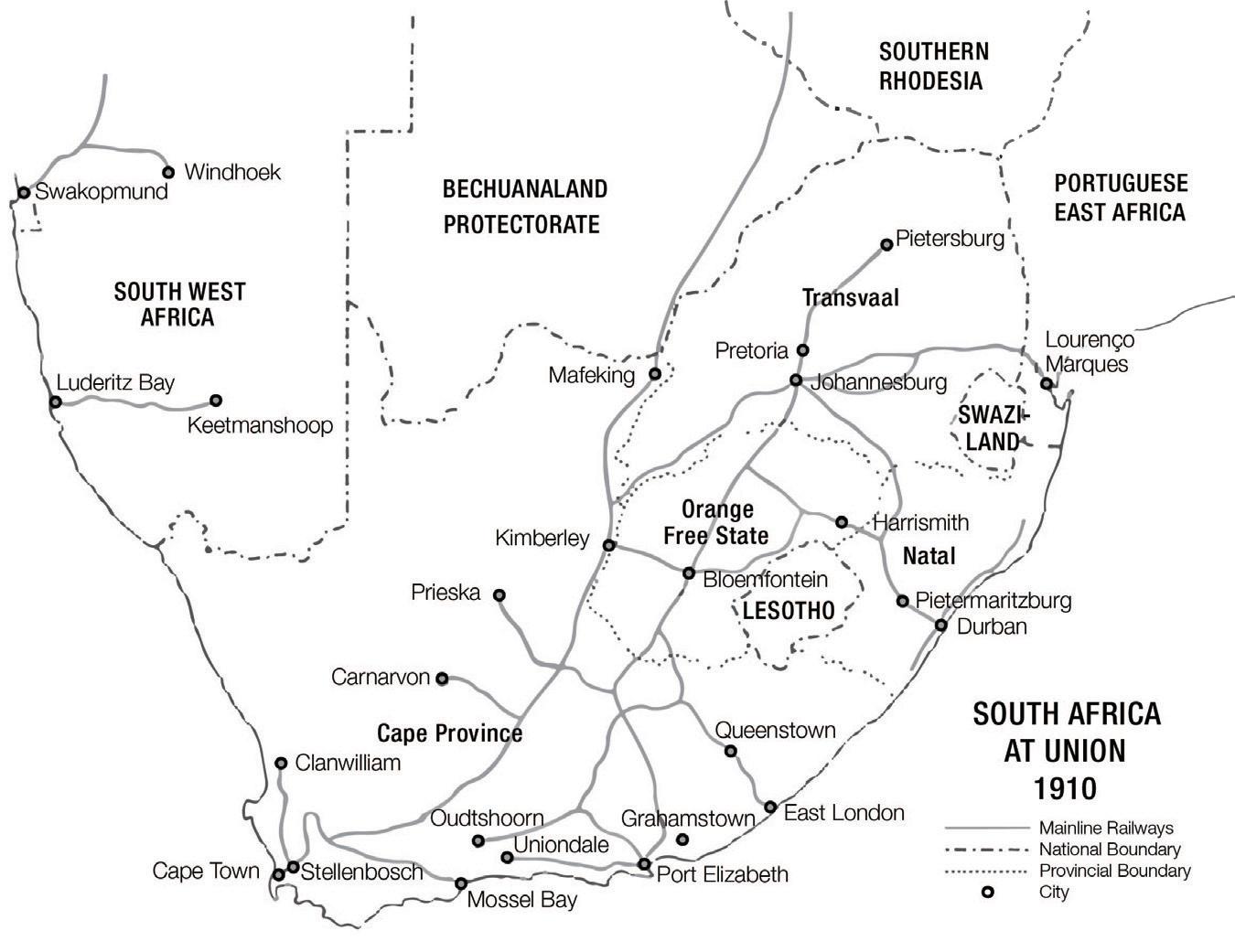
result, local officials often improvised enforcement selectively and muddled through many issues that the new laws had not addressed. In this period, a unified South Africa became a state that perpetrated many kinds of violence and suppression while also allowing loopholes, workarounds, and countless forms of evasion.51
What did this mean for Shembe? A great deal. As an evangelist, Shembe’s first impulse was to follow the major currents of African men’s mobility, moving to a town and then to a big city. Shembe did not begin to experience success, however, until he pushed back against the direction of those currents, moving into rural areas and among people left behind. And even there, he had to tailor his message to fit the circumstances he found, in which African women and children predominated but rural patriarchs still had significant say. That Shembe could try out so many different places—and keep finding new ones when he ran into more trouble—was a testament to the changing possibilities of mobility in an industrializing South
MAP 1. The Union of South Africa with major railways in 1910.
ADAPTED FROM MAP IN THE CAMBRIDGE HISTORY OF SOUTH AFRICA, VOL. 2,
EDITED BY ROBERT ROSS, ANNE KELK MAGER, AND BILL NASSON (NEW YORK: CAMBRIDGE, UNIVERSITY PRESS, 2011).
Africa. In Shembe’s lifetime, the Nazaretha were a church of the train, growing within walking distance of its tracks. The very ability to traverse so many kinds of borders by train and foot also meant that Shembe moved across microclimates of possibility and restriction. Indeed, even as a changing economy made space for new alignments of people, those people had to find each other and find ways to see across social divides. Shembe himself—through his movement, promises to heal, and example—became one of many sources of commonality, but fissures remained. The next sections turn to the threads that surfaced again and again in Shembe’s life—absorbing ideas, negotiating constraint, and cultivating popular appeal—as he navigated this changing world to become a prophet of the people.
Absorbing Ideas
Throughout his life, Shembe adjusted to different circumstances by adopting new ideas. As a boy in the Free State, he picked up an embryonic sense of what it meant to be a Christian while watching and observing his white landlord.52 As an evangelist in rural Natal, he found ideas from the Bible that he could use to address the circumstances of families anxious about infertility.53 And as a church leader expanding into southern Zululand, he incorporated ideas about chiefly authority into the organization of the Nazaretha Church.54 The list could continue, and cataloging every idea Shembe pieced together in an intellectually rich and varied life would be impossible. It is, however, possible to see layers and trace patterns.
Shembe was, like many others born in nineteenth-century South Africa, an astute observer and learner in part because of displacement and dependency. For Shembe, precarity encouraged intellectual flexibility. Whether attempting to secure land for his family, struggling to feed himself, or avoiding the watchful eyes of government officials, Shembe moved through places where he needed patronage, protection, and resources from others. These needs heightened the stakes of finding ways to transform from a stranger to a welcome guest.55
As an evangelist and then a church leader, Shembe also pursued specific kinds of knowledge from people around him. One form of this learning related to what was possible in each new place he went: what were the laws, how could one get around them, and who might help? Because survival for Black people in this era of South Africa’s history often depended upon such knowledge, he had no shortage of information. Indeed, Shembe was not the only man who learned to change his
name at the pass office, put on a new outfit that hid his purpose for travel, or escape state surveillance by heading to the countryside.
Other important forms of learning came from the divine healing revival that Shembe embraced. Earlier methods of healing in the region depended upon rituals of doubt and skepticism, in which healers had to guess at the problems they would need to solve.56 Revivalism, instead, encouraged people to “report their problems” to Shembe as part of the process of achieving healing. Shembe began to succeed when he found space for large gatherings, where he could collect information about many people’s hopes, anxieties, and problems.57 He could, as a result, speak directly to people in different places, often acting as a mirror for their circumstances because of all the things they had told him.
Over time, absorbing new ideas produced reinventions in Shembe’s life and promoted an expanded understanding of who could belong in the Nazaretha community. Again and again, absorbing ideas made absorbing people possible. But the processes that facilitated ideational flexibility also produced contradictions common to the Christian faith. For example, would the Nazaretha be a church of the young women who initially flocked around Shembe and who, like Shembe himself as he became a Christian, had often disobeyed their parents to do so? Or would it be a church of the chiefs in southern Zululand who offered Shembe shelter from state surveillance in the 1920s and were worried about their daughters’ behavior? Could it be a church of both? The fact that Shembe had to reconcile such different possibilities leads to the next thread.
Negotiating Constraint
That Shembe negotiated constraint must seem obvious and is already implied by his circumstances. Shembe was an African man with limited formal education living under a series of racist governments. The story of his conversion to Christianity, moreover, involved him rejecting his main sources of authority, both as a family patriarch and a successful farm tenant, to follow God instead. Again, however, Shembe’s life reveals creative patterns for negotiating constraint, whether the source of that constraint came from his own family or the South African state.
Movement provided one of Shembe’s most important strategies. He came from a community of people who had, in the nineteenth century, been among the most mobile in an age of scatterings. Indeed, his forbears in the Hlubi chiefdom
had moved not only when displaced by others but also to find ways to come back together with their chief and each other.58 Even after Shembe left his family behind, he held onto a possibility confirmed by their history: that, when circumstances did not work out, he would be able to find some place better if he kept moving. But, of course, in the twentieth century, Shembe could go farther, faster. He also had new ideas fueling his movement, including the examples of wandering prophets in the Bible and, indeed, the broader, pervasive cultural associations between journeys and spiritual progress.59 Still, as he became the leader of a community, he could no longer move everyone with him in times of trouble, and Shembe was obliged to manage the constraints that others faced, too. This made Shembe’s continued movement between different outposts of the Nazaretha community one of the strongest threads knitting them together.
Evasion stands out as another, related method for negotiating constraint. Evasion was, in fact, baked into Shembe’s and many others’ experiences of becoming Christians, as he and they learned that sneaking to follow God was just. The story of Shembe’s conversion involved him taking his evasive experiments with Christianity and making them public.60 And yet, as Shembe encountered a South Africa shaped by indirect rule, settler colonialism, and industrialization, evasion often continued out of necessity. At different moments, his names, his clothes and appearance, his statements, his movements, and his partnerships contributed to strategies of evasion. Sometimes, at the height of his influence, so did welcoming large crowds of people at his church headquarters. As one white official noted in 1929, Shembe was “no ordinary run of small prophet who conducts his doings in secret.”61 This official wrote at a time when the Nazaretha faced state scrutiny for resisting new public health laws and as officials hemmed and hawed about how to respond. Shembe’s openness helped the Nazaretha evade punishment because state officials worried about the many people who might be watching the government’s next steps.
Finally, compromise and concession represent another pattern for negotiating constraint. Shembe and the Nazaretha shared an impulse with many other communities in the nineteenth and early twentieth centuries: if they could just carve out space to make some of their own rules, their lives would be better. 62 For the Nazaretha, this impulse meant finding many small spaces—some only for temporary use—and then moving people between them. This meant, too, navigating the different laws governing each locality and the demands of the people who inhabited it. As the Nazaretha faced pressure from above and below with every move, Shembe needed partners who could help him evade the state.
This circumstance made rural patriarchs an especially important forcefield within the church, whether they were converts or not. By charting the changing notions of gender, marriage, and sexuality in the church over time, one observes Shembe recurrently making compromises with such men in mind.
Shembe’s ability to negotiate constraint and manage others’ constraints contributed to the growth of the church and to his personal success. This, in turn, demanded that he adapt in other ways. He had come into Natal as an “underdog,” whose appeal stemmed from how he was different from other African Christians and elites. Within a decade of his time in Natal, he was a landowner, a known figure, and someone in control of financial offerings from thousands of church members. Over the next decade, he became a celebrity. Shembe’s management of his own transformation exposes the final thread of this study.
Cultivating Popular Appeal
In Shembe’s first five years as an evangelist, his main task involved finding a place where his distinctive background and message might generate sustained attention. These efforts took him from a rural farm to a small town, then to a city, and, finally, to a cluster of chiefdoms in a rugged, mountainous region north of Durban. In those chiefdoms in 1913, Shembe launched the Nazaretha faith.63 This was possible because of how his distinctive background and message resonated in a region of many people left behind.
By and large, the people who came together around Shembe remained at a distance from the major transformations of their time. They were rural women and children as well as struggling chiefs and their families and young African Christian men left behind by the possibilities open to people like them a generation before.64 To some of these people, the church promised charity, care, and even honor in being among the “least of these.” To others—and especially the first young women who joined the church—it offered adventure, importance, and an experience that set them in motion, as they watched their brothers leave for towns.
From whatever angle one entered the church, the Nazaretha were among many new denominations in South Africa that reframed what it meant to be a good Christian. The Victorian mission model had encouraged African Christians to acquire objects, property, and formal education to mark their spiritual progress.65 The Nazaretha began to define being a good Christian instead by what one sacrificed,
whether medicine, certain foods, or sex.66 For generally poor, rural people, this was an affordable Christianity. More than that, it was a form of Christianity in which the exemplars of the faith did not have the most, but rather gave up the most.
The Nazaretha were not, however, outside of the transformations taking place in South Africa. They were adjusting to a world in which they might also take the train, eat food they had not produced, learn to read, and wear clothes made from manufactured cloth.67 Many were adjusting, too, to the problems that accompanied the realignment of their social and economic lives. They grappled with food insecurity, high rates of infant and childhood mortality, and a breakdown of the informal social services that, in good times, had allowed African households to absorb vulnerable people.68 Many members of the church, like many South Africans, found themselves left behind, ironically, by a system they could not escape.
FIGURE 2. A Nazaretha service in the early 1930s. The uniforms, tablecloths, candlesticks, and vases were products of an industrial age.
PHOTOGRAPH INCLUDED WITH PERMISSION OF CAMPBELL COLLECTIONS, UKZN.
Still, a shared “left behind” status was never sufficient for the Nazaretha to come together. Other tools that pulled them into a community were products of an industrializing age, if ones that church members sometimes chose between or engaged with selectively. Re-printed photographs let people bring Shembe into their homes, fostering connections with a leader that could feel deeply personal.69 Mass-produced cloth gave the Nazaretha affordable ways of marking belonging in the form of the simple white robes that became the first church uniforms.70 Even revivalist “healing homes” resembled modern hospitals in certain respects; they were spaces where sick people with many different ailments came to get expert care and then stayed until they got well.71 The Nazaretha organized their church headquarters, Ekuphakameni, around similar principles of care, even as they rejected all forms of medicine.72
The Nazaretha also came together because of who they were not. Enemies and outsiders helped bind them too. Over the course of Shembe’s lifetime, he openly discussed many. Some, such as his neighbor John Dube and the Zulu king Inkosi Solomon kaDinuzulu, were the ultimate frenemies: people to whom Shembe wanted proximity to bolster his status but who were uneasy allies at best. At different times, other African Christians, antagonistic chiefs, and people who abandoned the church became enemies. As Shembe walked a dangerous tightrope of evasion and, occasionally, outright defiance, he marked the government as a foe too. When, near the end of his life, Shembe told a white visitor that he “did not believe in the power of the law, but in the powers of God,” he juxtaposed these topics (laws and God) intentionally and spoke from the experience of having led defiance of public health laws—and having succeeded (mostly) at avoiding punishment.73 Such an oppositional approach to the state allowed Shembe to channel popular support at a moment when Africans clamored for a more confrontational response to white minority rule.74
Given the complexity of his life on the move, Shembe unsurprisingly sought to control the centrifugal forces around him. He did this through the redistribution of cattle, land, cash, and food; as someone always on the move, he framed himself as a conduit of resources. But Shembe also used crowds and photo opportunities to broadcast who he was through his clothes and possessions. He made foils of the people around him, including members of his own church as well as other celebrities and leaders with large followings. In the last years of his life, one of the most significant symbols of Shembe’s self-fashioning came from his modes
of transportation. Stories circulated that Shembe refused the ultimate symbol of luxury for the African elite of his time: a motor car. Instead, he kept a collection of “a dozen pairs of worn shoes, and twenty [walking] sticks” as a physical reminder of the miles he had traveled and how he had traveled them.75 This sent many messages to his people, among them that he would keep moving to seek out others left behind in the places where cars still could not go. These choices dramatized his sacrifices and framed him as the person in the church who had given up the most. Years of carefully crafting a persona built on suffering and sacrifice made it small wonder that some church members considered Shembe, by the time of his death, to be a messiah.76
Bodies of Evidence
Like many accounts of individuals in Africa and the African Diaspora, this reconstruction depends upon an exceptional archive. In this case, that archive includes oral traditions and writings that chronicle Shembe’s life, journeys, and sermons as well as church members’ testimonies of healing. These testimonies detail miracles: events that their speakers narrated as unexpected outcomes resulting from divine intervention, with Shembe always as the source of the divine. Most follow a common pattern: someone was sick or suffering in some way for a long time, that person tried other remedies, but nothing worked until Shembe.77 The long history of scholarly interest in Shembe and the Nazaretha community means that, in many cases, versions of these oral traditions and testimonies have been written down and translated.78 It is also possible to find nearly verbatim accounts of healing told by the same person, but to different researchers, decades apart. It is possible too to trace a core set of church narratives, including much of Isaiah Shembe’s spiritual autobiography, across decades and find striking similarities through these retellings as well as some significant additions and differences.79 These sources are, to use Cheikh Anta Babou’s phrasing, “living history.”80
The healing testimonies, in particular, are complicated products of an industrial age.81 Mass-produced print media created by divine healing revivalists carried examples of this genre around the world as early as the 1890s.82 But these accounts shared a great deal in common with another genre that proliferated even more widely at the same time: patent medicine advertisements. In South Africa in the early twentieth century, advertisements for patent medicines—including Dr. Williams’ Pink Pills,
Zam-buk Ointment, Bile Pills, Reviva Pills, Rapidare Pills, and Dr. Chamberlain’s Remedy, to list a few—appeared in print. Many of these advertisements were translated into local languages and took the form of personal narratives explaining success using a particular patent medicine. Sometimes the people who wrote in filled their accounts with specific, if difficult to trace, details. There was, for example, a “Mrs. Susana M. Baneke of Uitzicht, Alberfeldy, Harrismith, ORC” who had been “sick for two years” or a “Mrs. Martha Chere Maloi” who had been “very sick in 1899 and 1900.”83 Other times, however, these advertisements referenced well-known, public figures. The pages of the biggest isiZulu-language newspaper, iLanga lase Natal, included a narrative of Shembe’s already referenced neighbor, John Dube. He, the ad explained, had “tried many kinds of medicine” for his “liver and stomach problems” until his success with Dr. Williams’ Pink Pills.84 Outside of newspapers alone, patent medicine salesmen took bottles of pills on the road, sharing formulaic testimonials as they attempted to sell their remedies to the majority of Africans who still could not read.85
The Nazaretha were one of many groups of people for whom an age of advertising offered new tools for organizing and coordinating claims. These communities found productive slippages between testimony and testimonial as well as between advertisement and personal narrative. As such, the words of one divine healing revivalist who noted that the baby born to her was “an advertisement for Zion [divine healing],” rang truer than she might have meant.86 Still, the Nazaretha would take a genre, forged in an era of print media and mass production, and turn it into a way of participating in religious life that attenuated the link between Christianity and literacy in their region. Speaking, not reading, would serve as a central act of their faith throughout Shembe’s lifetime.87 This was possible in part because the divine healing revival made the body, as much as the Bible, a source of evidence about sin and morality. Still, the Nazaretha also took healing testimonies and used them alongside other forms for making claims, including praise poems and carefully crafted church histories.88
Sources that emphasize miraculous powers might not seem useful for understanding the complexity of an individual’s experience. But there are ways of re-grouping and re-ordering the healing testimonies and other Nazaretha sources. The variables within healing testimonies raise useful questions. Why, for example, did accounts of Shembe’s earliest healings resemble Jesus’s while later ones emphasized curing infertility, something that Jesus—for all his miracles described in the Bible—never did?89 And what can we learn from tracing the mundane details
